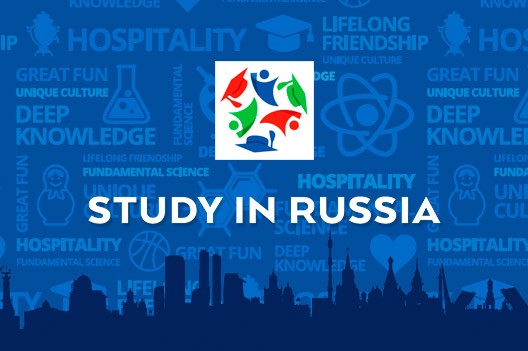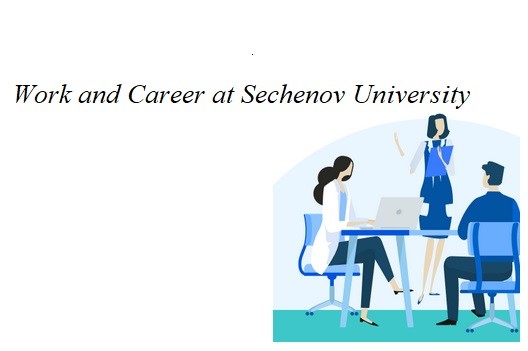-
About University
- Mission & Brand Strategy
- University Leadership
- Rector's Welcome
- History
- Regulatory Documents
- Contacts
- Staff
- International Recruitment
- Partners
Applicants- Why Sechenov University
- Degree Programmes in English
- Preparatory Courses
- Non-Degree Programmes
- Transfer from other Institutions
12.11.2021SIBS-2021
Sechenov University has hosted the 5th Sechenov International Biomedical Summit 2021 (SIBS-2021). The English-language online event took place on 9–10 November. The conference was attended by 392 research groups from 16 countries.
SIBS-2021 included 3 plenary sessions, 10 meetings, a poster session where more than 30 projects were presented, and a symposium on theranostics in oncology. The themes represented 4 broader areas — biodesign, oncology, cardiology & bionic technologies, and pharmacy.
At the start of the summit, Andrey Svistunov, First Vice-Rector of Sechenov University, welcomed the guests.
‘This is the 5th anniversary SIBS event. It is taking place in 2021, the Year of Science and Technology declared by the President of the Russian Federation. Our country supports research progress and scientific integration into the global world. Over the years, SIBS has been not just an international scientific event — the summit has also provided a platform for launching new interdisciplinary projects. Sechenov University organises SIBS, keeping in mind that the summit should accumulate national and international research potential for new points of growth’, said Andrey Svistunov.
Many research projects have been launched in Russia and abroad thanks to the SIBS meetings. One of the examples is the special grant from the Government of the Russian Federation for the World-Class Scientific Centre ‘Digital Biodesign and Personalised Healthcare’. The funding was granted after the outstanding performance of the research team formed at SIBS.
SIBS-2021 is also expected to produce new scientific groups which will be aiming to implement innovative projects in line with the national development goals of Russia.
A number of distinguished guests attended the summit. Among them were Ramesh Chandra, co-founder of the Centre for Biomedical Research at the University of Delhi (India); Elena Zagaynova, Rector of Lobachevsky State University of Nizhny Novgorod (Russia); and Iskander Akhatov, Director of the Centre for Design, Manufacturing, and Materials at the Skolkovo Institute of Science and Technology (Russia).
In addition, the summit hosted educational sessions for 150 participants. These sessions included the School of Digital Cardiology, Sechenov Biomedical Hackathon in Bioinformatics and Clinical Oncology, and a biodesign competition for young scientists.
‘We are very happy to see that young researchers are interested in these challenging interdisciplinary areas’, added Andrey Svistunov.
The School of Digital Cardiology attracted leading experts in the field of digital medical technologies. They discussed data arrays, programmes based on AI and mathematical modelling, methods of remote monitoring and screening of cardiovascular diseases and implanted devices, and computer vision in cardiology.
In digital cardiology, the most promising are the following areas: telemedicine screening; treatment control; prognosis of cardiac pathology (course of disease and recovery); automatic analysis of images (eye fundus, tomography data, ultrasound) with the identification of new markers for diagnostics; new techniques for cardiac pathology diagnostics using expiratory air mass spectrometry.
One of the important areas of digital cardiology, according to the participants, is the creation of systems to assist doctors in making decisions for patients with coronary heart disease, arterial hypertension, and lipid metabolism disorders.
‘In our practice, we already use remote monitoring of cardiac arrhythmias, conduction disorders, and myocardial function to screen patients for heart failure’, said Philipp Kopylov, Director of the Institute of Personalised Cardiology at Sechenov University. ‘We are working towards introducing these technologies into the healthcare system of Russia’.
The School of Digital Cardiology showed young doctors how to use digital technologies, machine learning, and artificial neural networks. The School has been very successful due to the collaboration between cardiologists, physiologists, mathematicians, big data analysts, and physicists.
Embed on website
SIBS-2021
Sechenov University has hosted the 5th Sechenov International Biomedical Summit 2021 (SIBS-2021). The English-language online event took place on 9–10 November. The conference was attended by 392 research groups from 16 countries.
SIBS-2021 included 3 plenary sessions, 10 meetings, a poster session where more than 30 projects were presented, and a symposium on theranostics in oncology. The themes represented 4 broader areas — biodesign, oncology, cardiology & bionic technologies, and pharmacy.
At the start of the summit, Andrey Svistunov, First Vice-Rector of Sechenov University, welcomed the guests.
‘This is the 5th anniversary SIBS event. It is taking place in 2021, the Year of Science and Technology declared by the President of the Russian Federation. Our country supports research progress and scientific integration into the global world. Over the years, SIBS has been not just an international scientific event — the summit has also provided a platform for launching new interdisciplinary projects. Sechenov University organises SIBS, keeping in mind that the summit should accumulate national and international research potential for new points of growth’, said Andrey Svistunov.
Many research projects have been launched in Russia and abroad thanks to the SIBS meetings. One of the examples is the special grant from the Government of the Russian Federation for the World-Class Scientific Centre ‘Digital Biodesign and Personalised Healthcare’. The funding was granted after the outstanding performance of the research team formed at SIBS.
SIBS-2021 is also expected to produce new scientific groups which will be aiming to implement innovative projects in line with the national development goals of Russia.
A number of distinguished guests attended the summit. Among them were Ramesh Chandra, co-founder of the Centre for Biomedical Research at the University of Delhi (India); Elena Zagaynova, Rector of Lobachevsky State University of Nizhny Novgorod (Russia); and Iskander Akhatov, Director of the Centre for Design, Manufacturing, and Materials at the Skolkovo Institute of Science and Technology (Russia).
In addition, the summit hosted educational sessions for 150 participants. These sessions included the School of Digital Cardiology, Sechenov Biomedical Hackathon in Bioinformatics and Clinical Oncology, and a biodesign competition for young scientists.
‘We are very happy to see that young researchers are interested in these challenging interdisciplinary areas’, added Andrey Svistunov.
The School of Digital Cardiology attracted leading experts in the field of digital medical technologies. They discussed data arrays, programmes based on AI and mathematical modelling, methods of remote monitoring and screening of cardiovascular diseases and implanted devices, and computer vision in cardiology.
In digital cardiology, the most promising are the following areas: telemedicine screening; treatment control; prognosis of cardiac pathology (course of disease and recovery); automatic analysis of images (eye fundus, tomography data, ultrasound) with the identification of new markers for diagnostics; new techniques for cardiac pathology diagnostics using expiratory air mass spectrometry.
One of the important areas of digital cardiology, according to the participants, is the creation of systems to assist doctors in making decisions for patients with coronary heart disease, arterial hypertension, and lipid metabolism disorders.
‘In our practice, we already use remote monitoring of cardiac arrhythmias, conduction disorders, and myocardial function to screen patients for heart failure’, said Philipp Kopylov, Director of the Institute of Personalised Cardiology at Sechenov University. ‘We are working towards introducing these technologies into the healthcare system of Russia’.
The School of Digital Cardiology showed young doctors how to use digital technologies, machine learning, and artificial neural networks. The School has been very successful due to the collaboration between cardiologists, physiologists, mathematicians, big data analysts, and physicists.



